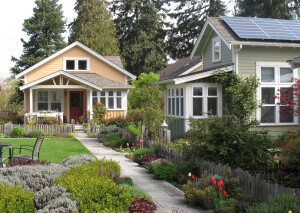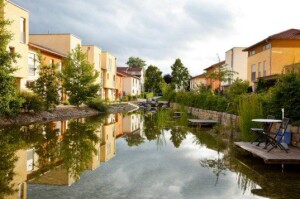 Hawaii’s housing crisis stems from the high cost of land combined with the high-cost of imported building materials and the difficulty in finding affordable, reliable builders. Land. Materials, Labor. All three components converge to make home ownership in Hawaii one of the most expensive in the nation and a huge challenge for island working individuals and families, seniors, and first time home buyers. Factor in lower than average wages, and the removal of long term rentals turned into AirBNB guest lodging, and home buying or renting becomes increasingly difficult for working and retired residents across the state.
Hawaii’s housing crisis stems from the high cost of land combined with the high-cost of imported building materials and the difficulty in finding affordable, reliable builders. Land. Materials, Labor. All three components converge to make home ownership in Hawaii one of the most expensive in the nation and a huge challenge for island working individuals and families, seniors, and first time home buyers. Factor in lower than average wages, and the removal of long term rentals turned into AirBNB guest lodging, and home buying or renting becomes increasingly difficult for working and retired residents across the state.
Housing availability impacts everyone. If you inherited an island property, or moved to Hawaii with sufficient funds to buy or build, it may appear that these factors do not directly impact you but the high cost of home ownership in Hawaii does actually have a negative impact on everyone in every community. High housing costs impact the quality and diversity of life in any community, limits the available workforce, and forces outward migration of our youth, neighbors, farmers, and service providers who are forced to move in the quest for more affordable, and in Hawaii’s case, rarely available housing. A healthy community indicator is the availability of housing for people at all levels of home buying or rental abilities who contribute to reaching workforce and neighborhood stability goals.
 A team from One Island Sustainable Living recently attended a national affordable housing meeting in Oakland, California where disparities in housing availability – ownership and rentals – was a hot topic. For many people, the concept of affordable housing appears an irreconcilable contradiction, a true oxymoron. Yet for the 500 people who attended the national Community Land Trust conference, there is not only hope, but proof, that if we rethink our housing and land use models, there are solutions that increase the stock of lower cost rentals and help first time or downsizing home buyers to find affordable homes in desirable communities. The solution that was the focus of the conference is the power of Housing Land Trusts.
A team from One Island Sustainable Living recently attended a national affordable housing meeting in Oakland, California where disparities in housing availability – ownership and rentals – was a hot topic. For many people, the concept of affordable housing appears an irreconcilable contradiction, a true oxymoron. Yet for the 500 people who attended the national Community Land Trust conference, there is not only hope, but proof, that if we rethink our housing and land use models, there are solutions that increase the stock of lower cost rentals and help first time or downsizing home buyers to find affordable homes in desirable communities. The solution that was the focus of the conference is the power of Housing Land Trusts.
A Housing Land Trust is usually founded as a non-profit organization with a mission to increase the availability of affordable housing services by securing land to best meets local community needs in perpetuity. This is not about building housing and selling to make the highest, fastest profit. It is about leveraging a variety of public and private resources to stabilize healthy communities by increasing the number of affordable housing units. There are successful Housing Land Trusts around the country, over a thousand in fact, and there is one on Maui. Some rehab existing houses or commercial buildings to increase affordable rentals or to offer affordable home purchase opportunities. Others secure vacant land and build housing that may range from 4 units to over 200 houses. In all cases, the non-profit owns or has control of the land and removes the cost of that land from the equation in the home buyer or renter’s costs to achieve safe and secure housing. In cases where there is demand, land trusts also rehab or build community resources – theaters, post offices, cultural centers, medical or office buildings.
How do the Land Trusts operate? City / non-profit partnerships, and church, philanthropic or trust / non-profit partnerships yield the most affordable housing. In these cases the land owners (city, church, donor or trust) makes the land available to a non-profit that manages the housing development and ongoing long term services. They may gift, sell below market, or lease the land to the non-profit housing organization that then takes on the responsibility for providing affordable housing for generations to come. Housing is rented or sold to the first owners under a Land Trust based on a percent of earnings, not on the value of the land and improvements. These lower cost methods of home ownership and expansion of rental stock allow for a diversity of workforce and retired residents, enriching and stabilizing local neighborhoods.
 If we look at the rental market in Hawaii, at any given time there are 3,000 rental units available statewide, and there are 30,000 AirBnB / vacation rentals statewide. The dearth of rentals for local households is directly impacted by the conversion of long term rentals to short term vacation rentals. Hawaii is not alone in this predicament. Florida’s Miami-Dade County has developed a first step solution that Hawaii could wisely benefit from. They are proposing a $1 a night fee on every vacation rental that goes into an Affordable Housing funding pool. They estimate the fund will generate $3.4 million a year to help increase affordable housing in their county.
If we look at the rental market in Hawaii, at any given time there are 3,000 rental units available statewide, and there are 30,000 AirBnB / vacation rentals statewide. The dearth of rentals for local households is directly impacted by the conversion of long term rentals to short term vacation rentals. Hawaii is not alone in this predicament. Florida’s Miami-Dade County has developed a first step solution that Hawaii could wisely benefit from. They are proposing a $1 a night fee on every vacation rental that goes into an Affordable Housing funding pool. They estimate the fund will generate $3.4 million a year to help increase affordable housing in their county.
Another advantageous funding mechanism employed are Community Benefit Agreements made between developers, local government, and non-profit consortiums. For example, the development of hundreds of new homes in the Mauna Lani and other resort areas can be tied to an investment by the developer in order to win the construction and development contracts. In other communities, 3-5% may be devoted to increasing affordable housing, 1-2% may be dedicated to public art, and another 2-3% to acquiring and maintaining public parks and open space. The towns impacted by these developments then become the direct beneficiaries of investments that serve their local community needs.
Community Land Trusts are evidence that we can turn our Affordable Housing needs into excellent opportunities to build healthier communities in
- Home
- About
- Four Cornerstones:
- Art
- Food
- Farms
- & Sustainable Living
- in the Pacific / North West












Leave a Reply